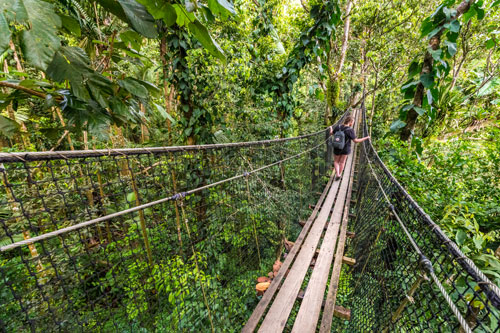Sorry, this entry is only available in French.
(Français) Découvrez les Chutes du Carbet Basse-Terre
(Français) Chutes et rivières Basse-Terre
Randonnée sur le Volcan
Un écosystème unique
La Guadeloupe n’est pas seulement des plages de carte postale sublimes, c’est aussi un véritable trésor naturel classé réserve de biosphère par l’UNESCO depuis 1992, des zones terrestres, côtières et marines abritant un écosystème particulièrement protégé pour contribué à la conservation des paysages et de la biodiversité.
Le parc national de Guadeloupe abrite trois types de milieu naturel : La forêt tropicale, la mangrove et le littoral. Autant d’occasion d’excursions et de découvertes incroyables.
N’hésitez pas à prendre un guide, pour profiter pleinement de vos excursions. Passionnés de leur environnement ils ont l’art de vous communiquer leur enthousiasme et le savoir.

Une forêt tropicale luxuriante, parsemée de cascades, de jacuzzis naturels que vous pouvez découvrir de différentes façons. Suspendu au milieu de la canopée, en 4×4, en randonnée à pied. Pourquoi pas tout essayer, les sensations sont différentes à chaque fois. L’une de mes préférées reste la découverte du volcan, l’une des plus belles randonnées de l’île : la Soufrière, que les locaux appellent aussi « la Vieille Dame ».
L’arrivée au sommet se mérite !

5H de marche dans la forêt tropicale. Plusieurs traces avec différents niveaux de difficultés sont possibles. Cette randonnée n’est pas réservée qu’aux sportifs aguerris, Les enfants dès 12 ans peuvent accéder à cette superbe journée d’aventure. Il est bien entendu recommandé de prendre un guide ! (La conciergerie de La Créole Beach Hôtel & Spa saura sans nul doute vous conseiller les meilleurs).
Un spectacle mémorable
Tout au long de votre parcours vous découvrirez de nombreuses cascades, comme le Saut des 3 Cornes ou les fameuses chutes du Carbet et des sources d’eau soufrée. Le spectacle des cratères crachant leurs fumées soufrées est une expérience mémorable !
Les bains de Sofaïa, source naturelle chaude et soufrée

Equipez-vous de bonnes chaussures (les claquettes ne sont absolument pas recommandées !!!).
Prévoyez un petit sac à dos avec 1 bouteille d’eau par personne, une barre de céréale ou un en-cas pour recharger les batteries, une crème de protection solaire, mais aussi un vêtement de pluie et un vêtement chaud. Le volcan est souvent dans les nuages et en haut il peut faire un peu frais. Vous aurez également besoin d’un maillot de bain. La randonnée se termine généralement par les « Bains de Sofaïa » source naturelle chaude et soufrée, particulièrement agréable après une telle randonnée.
La source est réputée pour ces bienfaits pour la peau, non seulement elle lui donne de l’éclat, mais soigne également les problèmes cutanés comme l’eczéma. Elle nettoie également le foie !








 Book the hotel directly
Enjoy the best guarantees and best offers
Book the hotel directly
Enjoy the best guarantees and best offers
 The best price
The best price No booking fees
No booking fees  Secured payment
Secured payment  An expert at your attention
Need help organizing or booking your stay?
An expert at your attention
Need help organizing or booking your stay?







 An expert at your attention
Need help organizing or booking your stay?
An expert at your attention
Need help organizing or booking your stay?